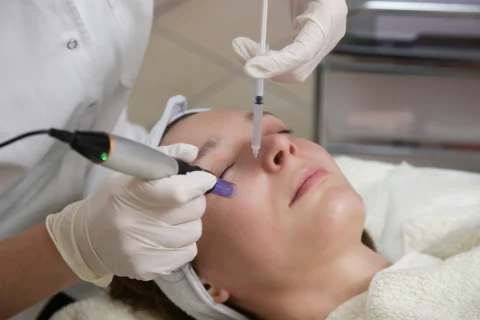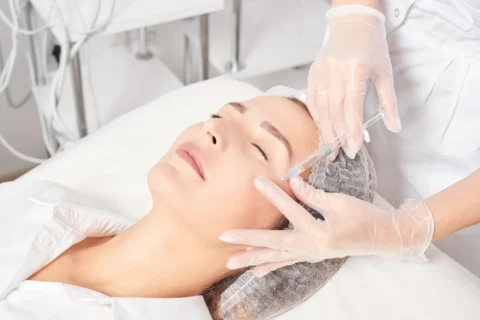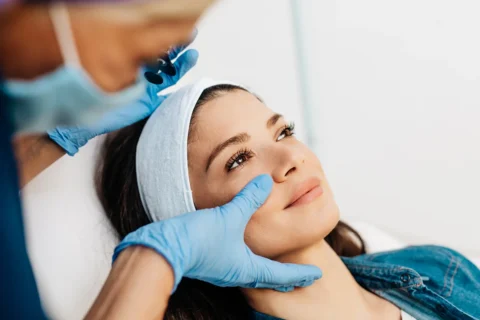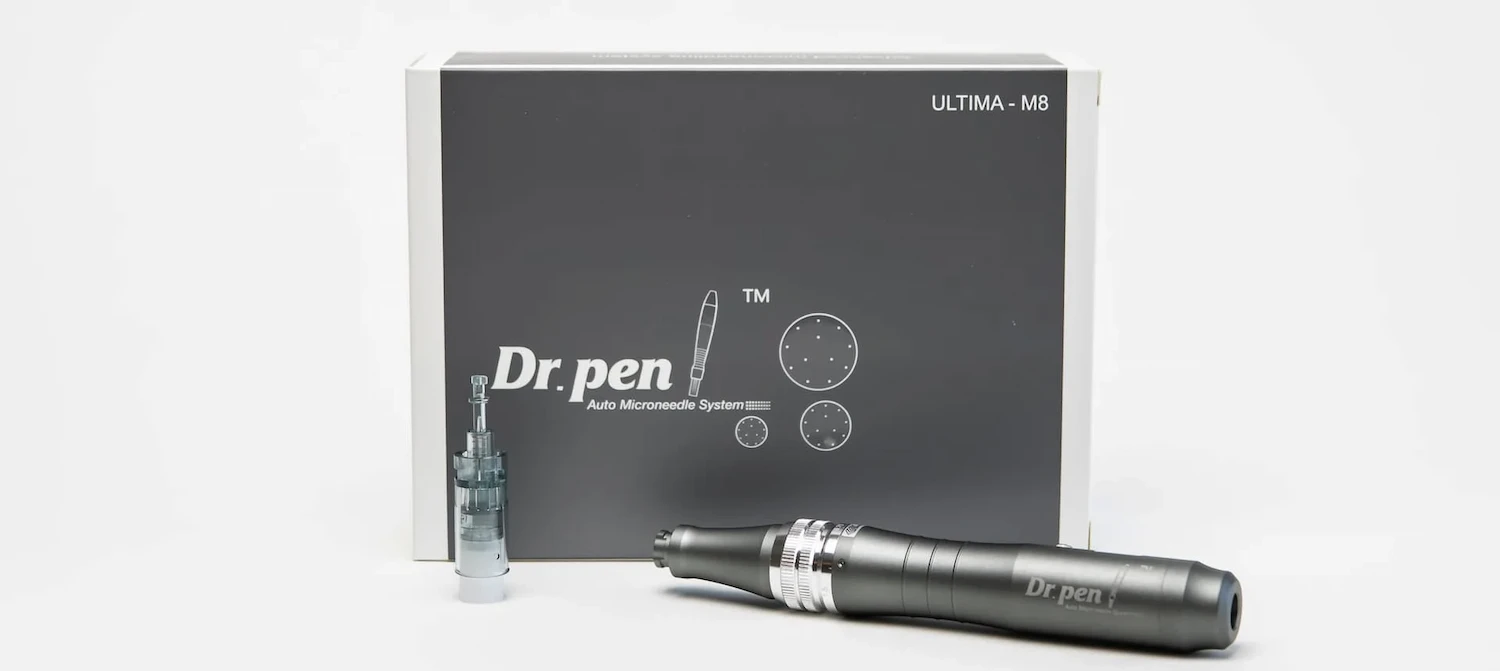Uncover the Benefits, Side Effects, and Essential Aftercare
Salmon DNA injections typically cause temporary redness, swelling, bruising, or tenderness at the injection sites. Some patients develop small, raised bumps that usually disappear within a few days.
Common Reactions to Salmon DNA
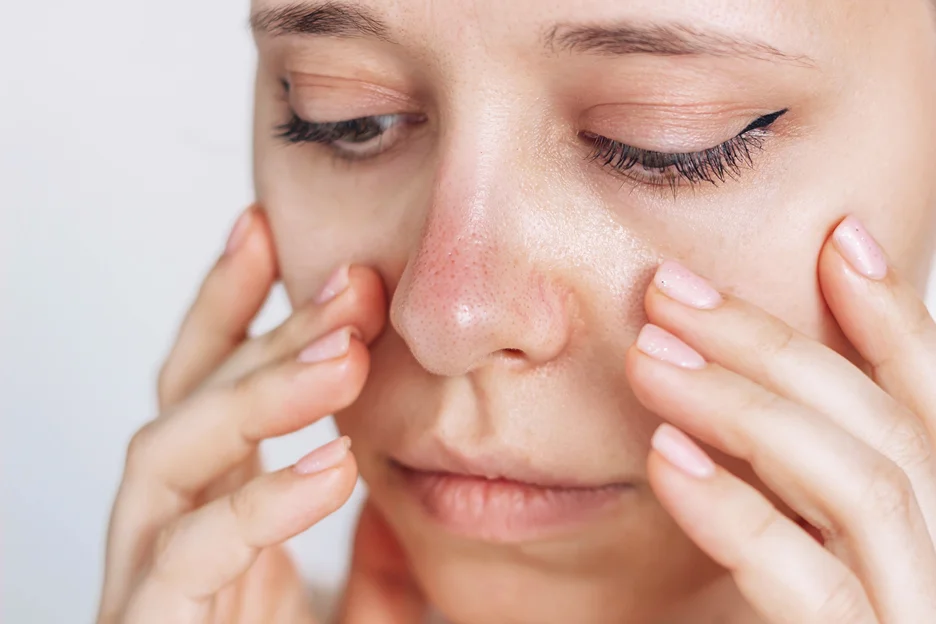
After salmon DNA injections, expect certain common reactions:
- Redness: The treated area will likely show redness due to the injections. This typically fades within a few hours.
- Swelling: Mild swelling often occurs but generally subsides within 1-2 days.
- Bruising: Bruising at the injection sites is possible and usually disappears within a week.
- Tenderness: Tenderness at the injection site is common but usually resolves quickly.
- Bumps: Small bumps may appear, especially if the injection was intradermal.
If you have autoimmune issues, important considerations include:
- Salmon DNA and Autoimmune Interactions: Discuss potential interactions and risks with your doctor.
- Potential Risks Assessment: Be aware of the possible negative reactions in autoimmune conditions.
- Long-term Effects: Monitor skin changes for long-term effects, as research is ongoing regarding the frequency and severity of these effects.
Post-treatment care is crucial:
- Protect your skin from the sun, as it will be more sensitive.
- Avoid getting the treated area wet, especially within the first 24 hours, to minimize infection risk.
- Do not peel your skin after treatment.
- Avoid blood thinners for about a week before and after the procedure to reduce bruising.
- Refrain from touching the treated area to lower the risk of infection.
Injection Complications
Injection complications stem from various sources. Incorrect placement, particularly insufficient depth, reduces efficacy. Non-perpendicular needle insertion elevates the risk of side effects.
Suboptimal needle angles or shallow injections prevent polynucleotides from reaching the dermis.
Injector guns, while convenient, present specific challenges:
- Product leakage compromises results. Studies indicate leakage can occur in up to 15% of injections with certain devices.
- Excessive suction can cause bruising and discomfort.
- Variable dosage control can impact treatment outcomes.
Infection remains a potential complication if sterile protocols are not strictly adhered to. Allergic reactions, though infrequent (occurring in less than 1% of cases according to some reports), can still occur. Pre-existing skin conditions elevate the risk of complications.
Selecting a qualified practitioner who prioritizes sterile technique is crucial to minimize these risks.
Aftercare Instructions
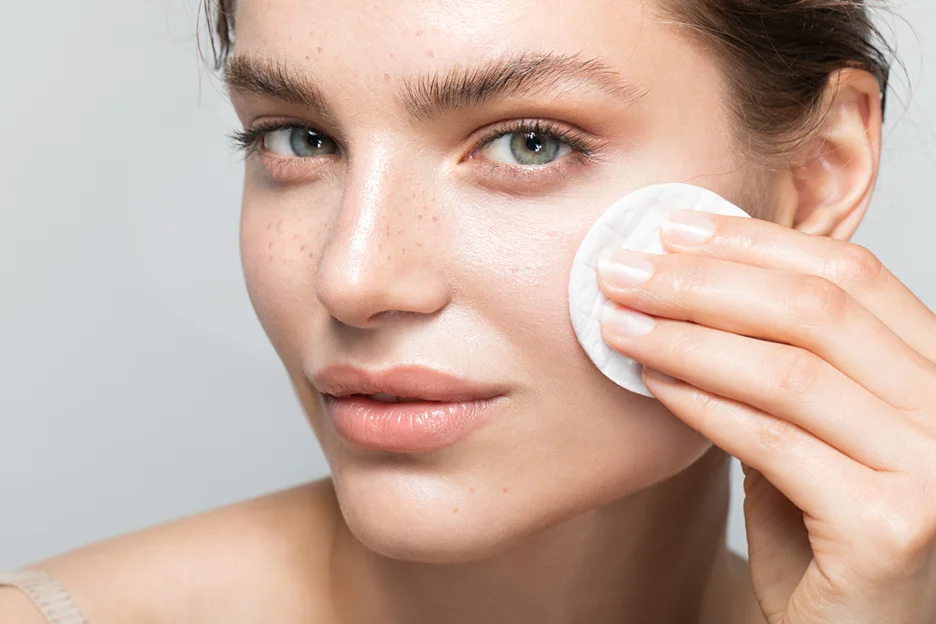
Following these aftercare instructions is crucial for achieving optimal results and minimizing potential complications after your skin treatment.
Cleanse:
- Use a mild, soap-free cleanser to gently remove any surface impurities without stripping the skin of its natural oils.
Moisturize:
- Apply a high-quality moisturizer immediately after cleansing to maintain skin hydration and elasticity.
Avoid Certain Products:
- For the first 24 to 48 hours post-treatment, avoid harsh or exfoliating products, including those with glycolic acid. Refrain from wearing makeup the day of your procedure to allow the skin to breathe and heal.
Hydration:
- Drink ample water to support your body’s healing process. Adequate hydration is linked to improved skin elasticity, potentially enhancing the treatment outcome by up to 30%.
Sun Protection:
- Daily application of broad-spectrum sunscreen with SPF 30 or higher is essential. Limit exposure to direct sunlight and avoid tanning beds, as UV light can lead to hyperpigmentation in up to 40% of individuals treated.
Rest:
- Engage in minimal strenuous activities for several days post-treatment to aid inbody recovery.
Substance Avoidance:
- Abstain from alcohol for at least one week before and after treatment, as it can increase the likelihood of bruising by around 25%. If taking blood thinners, consult your provider to manage the risk of excessive bleeding.
Protect the Treatment Area:
- Keep the treated area dry and avoid touching it, particularly during the initial 24 hours, to minimize infection risk by approximately 10-15%, based on clinical observations.
Follow Personalized Instructions:
- Adhere strictly to your provider’s specific aftercare guidelines to maximize benefits and reduce side effects.
Monitor for Reactions:
- Immediately contact your healthcare provider if you experience excessive redness, swelling, or an unexpected rash, which may indicate an allergic reaction in about 1-5% of cases. Initial skin-peeling procedures are generally advised against.
Communication:
- Maintain open communication with your healthcare provider regarding your recovery progress and any concerns that arise.
Recovery Expectations
Expect a short recovery, generally lasting a few hours to a couple of days. Most individuals resume daily activities almost immediately following treatment.
Mild redness and swelling might be observed, typically disappearing within 24-48 hours. Bruising may happen and usually fades within a few days.
The treatment generally causes minimal pain, with any discomfort being temporary. Post-treatment, skin sensitivity is common, so sun protection is advised.
Salmon DNA injections are designed to yield visible results for approximately 6 to 12 months. For extended long-term benefits, regular treatments every 6-12 months are recommended.
Benefits of Treatment:
- Reduced need to cover skin imperfections.
- Improved confidence in your skin.
- Extended enjoyment of treatment effects through consistent maintenance.
When to Avoid Treatment
Avoid salmon DNA injections in specific situations, requiring careful consideration of contraindications.
Allergies:
- If you have a fish allergy, do not get these injections.
Pregnancy and Breastfeeding:
- Avoid treatment if you are pregnant or nursing.
Medical Conditions:
- Autoimmune Diseases: Consult your doctor if you have an autoimmune disease; salmon DNA may trigger an immune response.
- Cardiovascular Disease and Diabetes: Reconsider treatment if you have cardiovascular disease or diabetes, especially if you use insulin, due to potential impacts on blood sugar and circulation.
- Cancer and Open Wounds: Do not undergo this treatment if you have cancer or open wounds to minimize the risk of complications.
- Blood Clotting: Discuss the risks with your doctor if you have blood clotting problems or take anticoagulants, as salmon DNA could affect blood clotting.
- Active Skin Issues: Regain control of severe acne, eczema, rosacea, or skin infections before considering treatment.
- Herpes Virus: Avoid treatment if you have a herpes virus outbreak in the treatment area.
Age:
- Individuals under 18 should not receive these injections.
Cosmetic Procedures:
- Avoid salmon DNA injections immediately before or after receiving fillers. Allow time for the skin to stabilize, generally about 2 to 4 weeks.
Other Considerations:
- Discuss your complete medical history and medications with your healthcare provider to ensure safety. Some medications may interact with the treatment, and altitude effects, though not established, should be considered based on individual circumstances.
Duration of Results

You’ll likely notice softer skin and less oil approximately 3 to 5 days after your first treatment. Following this, skin elasticity should begin to improve, and fine wrinkles may lessen by 2 to 4 weeks after your second treatment. Expect the skin to lift and appear fuller around 4 to 6 weeks following your third treatment.
Most individuals observe significant improvements after completing four treatments, with the benefits continuing over time. The advantageous effects of these treatments can persist for up to a year after the full course has been completed.
To sustain these results, it is advisable to schedule follow-up treatments every 6 to 12 months. It’s important to note that collagen production continues to enhance for several months even after the fifth session.
How long the results last can vary based on several factors, including:
- Your skin condition
- Your age
- The specific reasons for undergoing the treatment
Recognizing Allergic Responses to Salmon DNA Injections
Monitor for immediate and delayed reactions after injection. Allergic reactions to salmon DNA injections, though rare, can occur. Prompt identification is crucial.
Understand reaction severity. Reactions vary in severity. Typical allergic responses include mild local reactions such as itching or swelling at the injection site. More serious, systemic reactions can affect the entire body.
Watch for key symptoms. Mild allergic reactions might present as a rash or hives. More severe symptoms include swelling of the tongue, dizziness, and low blood pressure. Difficulty breathing signifies anaphylaxis, a critical condition requiring urgent medical care.
Research indicates that those with fish allergies might face a heightened risk for allergic responses to salmon DNA injections. Should any symptoms arise, contact your healthcare provider promptly. Treatment for mild reactions often involves antihistamines.
Take precautions. Inform your healthcare provider of all allergies, particularly any fish allergies, before the injection. To potentially reduce the likelihood of minor reactions, consider the following:
- Avoid blood-thinning medications before the procedure—consult your doctor for guidance.
- Protect the skin from sun exposure following treatment.
- Adhere strictly to post-treatment care instructions. Preliminary studies suggest these steps may decrease the incidence of minor reactions by approximately 20%.
Minimizing Bruising
To minimize bruising from salmon DNA injections, take proactive steps before, during, and after the procedure.
Before Treatment:
- Stop using blood thinners and alcohol to encourage normal blood clotting.
- Avoid scrubs, peels, and glycolic acid creams as they may increase skin sensitivity.
- Protect your skin from the sun with sunscreen, as sun-damaged skin may bruise more easily.
- On the day of your injection, skip wearing makeup to allow for a clean injection site.
During Treatment:
- Request your provider uses fine needles; smaller needles generally cause less trauma to blood vessels.
- Ask your provider to adjust their technique based on the treatment area to avoid major blood vessels.
- Consider using local anesthesia to numb the area, potentially reducing vascular response and bruising.
- A 2019 study indicated that using needles smaller than 30G significantly reduced bruising in similar procedures.
After Treatment:
- Continue avoiding blood thinners to prevent further bruising.
- Protect your skin from the sun to avoid worsening bruising.
- For the first 24 hours, avoid touching or wetting the treated area to minimize infection or disruption risk.
- Continue to avoid skin peeling or sensitizing treatments.
- If bruising occurs, apply a cold compress immediately; cold constricts blood vessels, reducing swelling and discoloration.
- Limit strenuous activities post-treatment, as increased blood flow can worsen bruising.
- Keep the area moisturized but avoid harsh products that might irritate the skin.
- Bruising usually resolves within 7-10 days; however, these steps may shorten the duration.
Maintaining Treatment Benefits
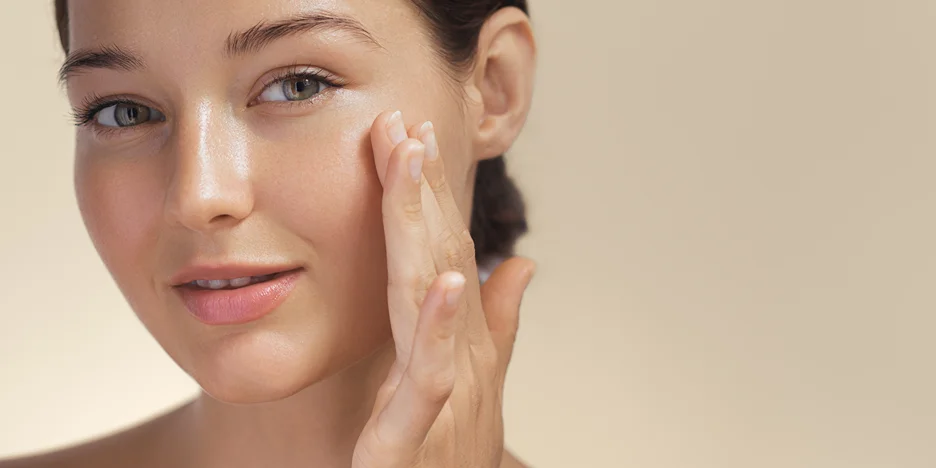
To keep your skin improvements from salmon DNA injections, actively protect your skin from the sun. Shield treated areas from direct sunlight immediately after treatment to lessen irritation; studies show sun exposure can reduce treatment effectiveness by up to 30%.
Apply a broad-spectrum sunscreen with an SPF of 30 or higher daily, even when it’s cloudy, and reapply it every two hours, especially during summer. Avoid tanning beds completely, as they increase skin damage. Sun protection helps maintain collagen production stimulated by the injections.
Hydrate your skin by drinking at least eight glasses of water daily to improve moisture retention. Use hydrating creams without glycolic acid consistently to nourish your skin.
Avoid harsh skincare products that remove natural oils. Skip chemical peels and scrubs for at least two weeks before and after salmon DNA treatments, as they inflame sensitive skin. Limit makeup use directly after treatment to prevent clogged pores.
Discontinue blood thinners a few days before treatment, after speaking with your doctor, to minimize swelling. Resist touching the treated area to avoid infection. Research indicates that consistent application and diligent maintenance contribute to lasting results, potentially extending the benefits of salmon DNA therapy by 20-30% over single treatments when supported by appropriate skincare.
Compare salmon DNA treatment with your current skincare methods to determine the best long-term strategy for your skin.
